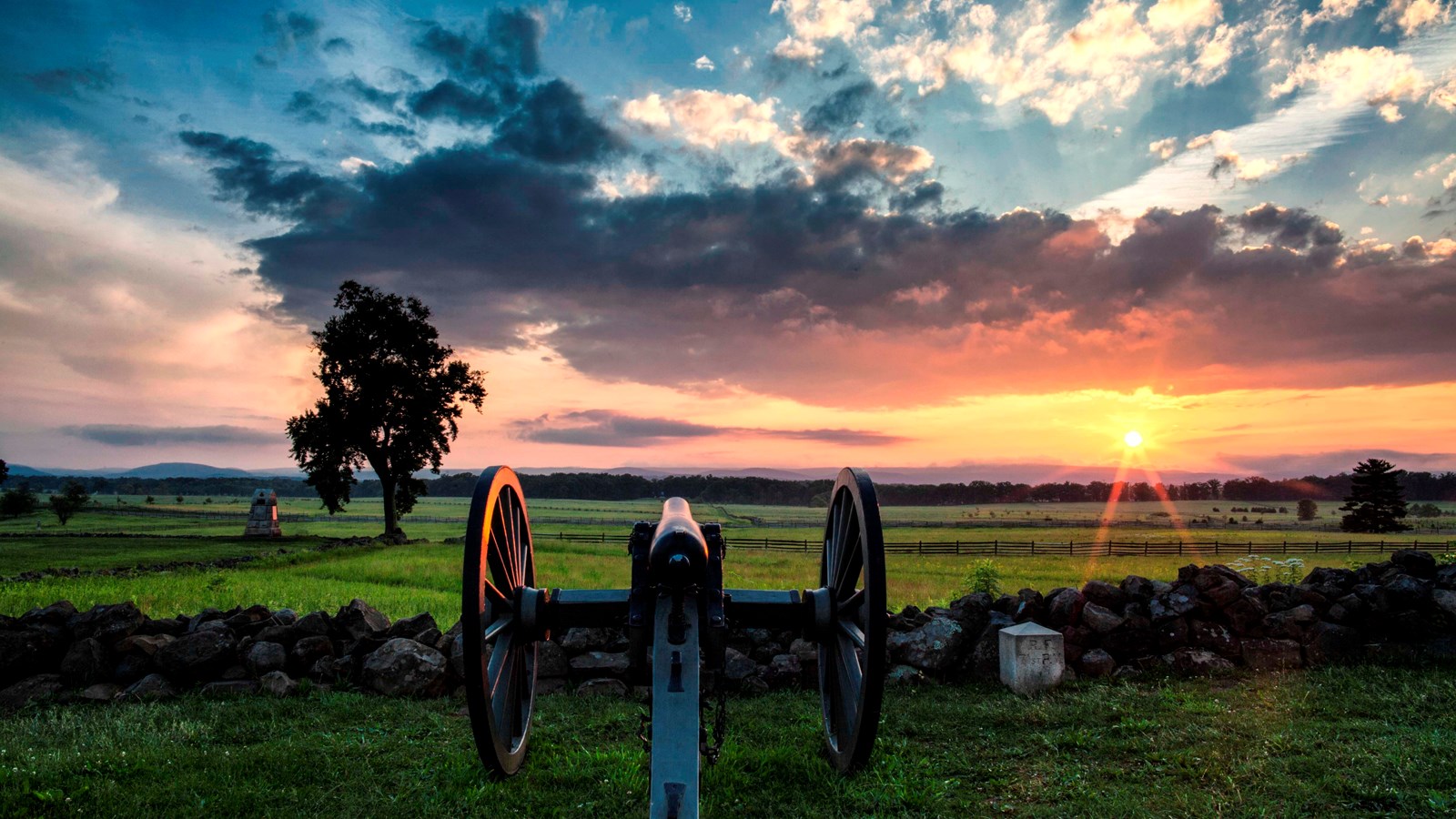Last updated: August 22, 2022
Place
The Angle

This area, encompassed by the stone wall running south and the wall extending east, became known after the Battle of Gettysburg as the Angle. The stone wall at the Angle is the remnant of a wall that was built by the local farmers before the battle and was originally two to three feet high. Federal soldiers used this wall for protection from Confederate fire.
On July 3, Confederate troops advanced up to the wall in front of where the 71st Pennsylvania Monument stands today. (The 71st Pennsylvania Regiment was also called the California Regiment because it was initially funded and led by westerners who wanted their state represented in the eastern army.) The advancing Confederates drove back the men of the regiment positioned here.
The Confederates initially took cover behind the wall and fired upon the nearby Federal troops. Shortly thereafter, about 200 Confederates followed Brigadier General Lewis A. Armistead over the wall to exploit the break in the Federal line. Armistead fell mortally wounded a short distance inside the Federal line, and the men with him were either shot down by converging fire or forced to fall back to the cover of the wall. A monument marking the approximate spot that Armistead fell is located immediately in front and to the right of the guns of Cushing’s battery.
Lieutenant George W. Finley, of the 56th Virginia Infantry, was among the Confederate soldiers who reached the wall here and he recalled the final moments of the fighting:
“The bullets seemed to come from front and both flanks, and I saw we could not hold the fence any longer. I looked back over the field to see the chances of withdrawing. The men who had begun to fall back seemed to be dropping as they ran, like leaves, and in a very few moments the number on the ground was four or five times as great, apparently, as when I had looked before. It seemed foolhardy to attempt to get back.”
Finley and many others surrendered. In less than one hour, the United States soldiers defending Cemetery Ridge repulsed Pickett’s Charge. Of the nearly 13,000 Confederates who participated in the attack, approximately 5,500 men were killed, wounded, or captured. Federal losses totaled nearly 1,700 men.The Federal repulse of Pickett’s Charge on July 3 represented the end of the Battle of Gettysburg. While the Confederate army remained in position along Seminary Ridge all day on July 4, they would not make another major assault. That night, the Confederates began retreating from the battlefield. The Army of the Potomac followed on July 5 and July 6. The war moved south.
Two soldiers who fought here aptly summarized the events of July 3 in letters home shortly after the battle. Confederate Lieutenant John T. James, of Pickett’s Division, wrote of his unit’s famous attack, “We gained nothing but glory, and lost our bravest men.” US General Alexander Webb, who commanded the Union infantry defending the angle, wrote to his wife; “You must recollect that [at] Gettysburg the fate of a country depended upon individuals.”
